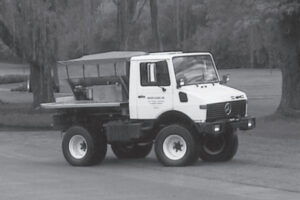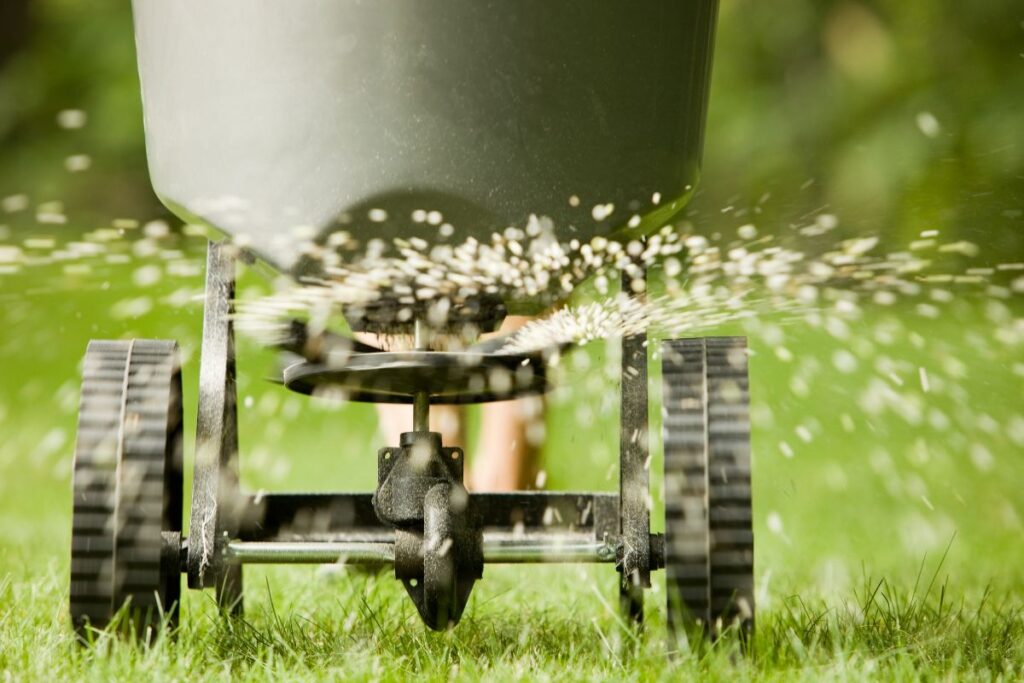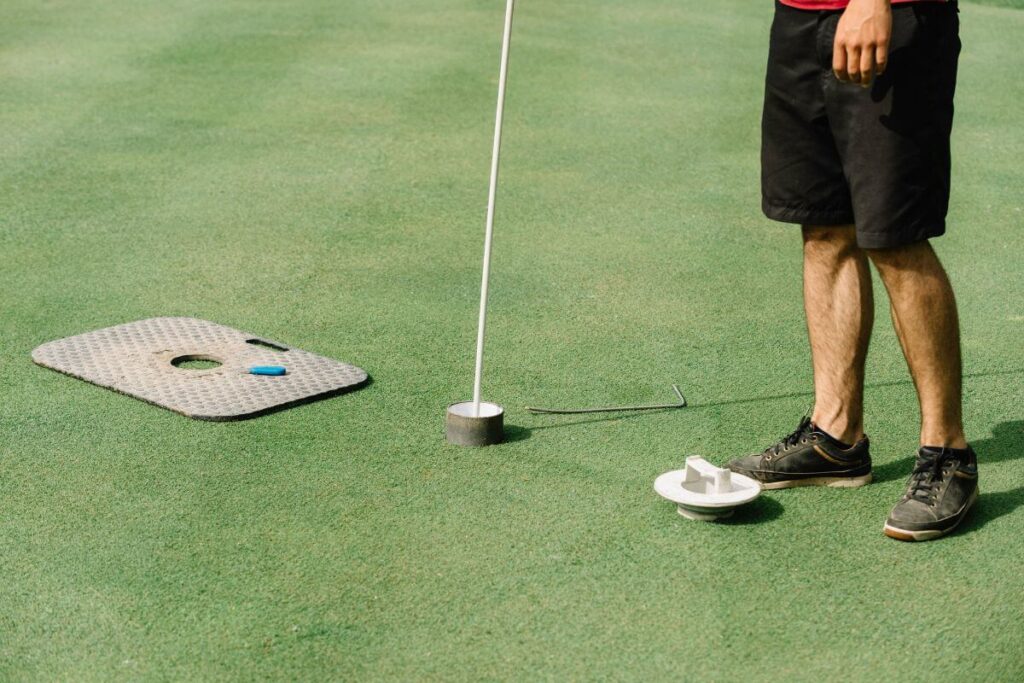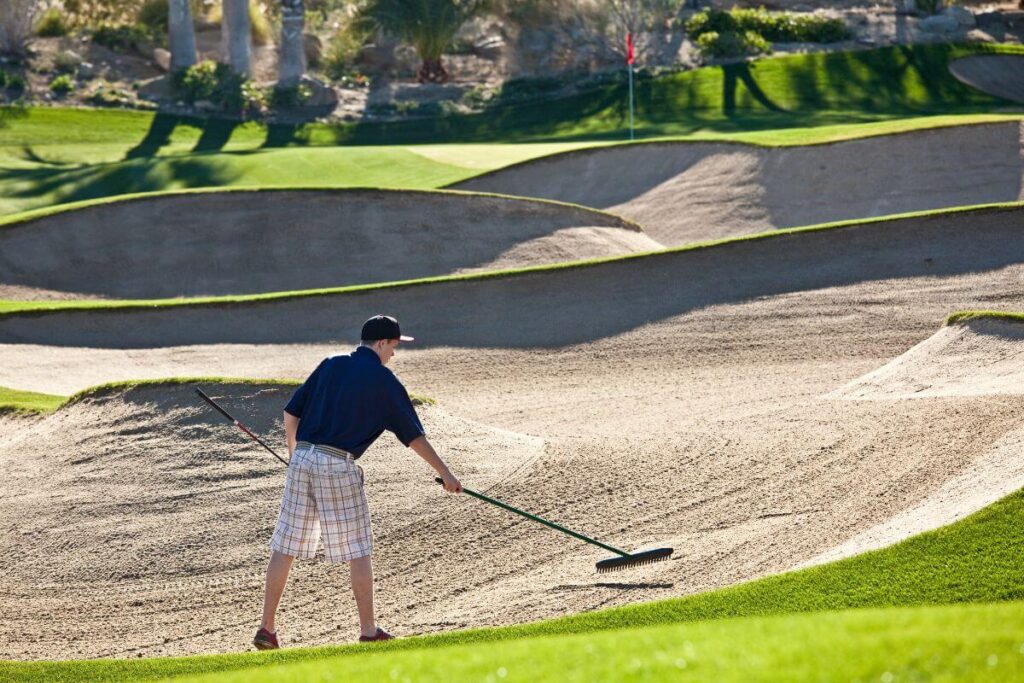All grass plants need nutrition that can be absorbed through the plant or obtained through fertilized soil to sustain life. Superintendents have many different fertilizers to choose from, and to formulate a nutritional program is a complex task.
Virtually all fertilizers have beneficial properties, but there is a degree of variation in their suitability for grass on greens, tees, fairways, and the rough. For anyone rising up through the ranks with the objective of becoming a superintendent, a basic course in fertilizer chemistry is an absolute must.
Working at a golf course, tree farm, sod nursery, botanic garden, or sports-park-related field that provides hands on training with plant life is a great introduction to the basic nutrition of plant life.
Reading the fine print on a bag of fertilizer or a container of nutritional additives is another way to understand the advantages of and concerns about fertilizer.
Table of Contents
How To Apply Fertilizer On Golf Course
As a general rule, mixed granular fertilizers should be watered in thoroughly after every application. After mixed fertilizer has been applied in the morning, markings around the cup and between the tee markers can sometimes be seen by the end of the day.
Applying mixed fertilizers during cool weather lessens the possibility of burning. By covering the hopper of a spreader, one can apply fertilizer when it rains and enjoy the benefit of washing the nutrients into the soil immediately.
A sensible program, then, should consist of a mixed granular fertilizer that may burn applied during the cool or shoulder seasons, and nonburning fertilizer applied during the heat of the summer.
Applying Fertilizers To Small Areas
When applying fertilizers to small areas, such as tees and greens, a walk behind cyclone type spreader is usually quite adequate. Before starting, check out the spreader and make sure that it operates properly. Many of the small cyclone spreaders are not as reliable as one might expect.
Test the spreading pattern on cement or an asphalt floor. Make sure the fertilizer spreads evenly, and measure the width of the application.
Now is a good time to calibrate the rate of application. Measure the area that has been applied and sweep up and weigh the material that has been used. From these two figures the rate of application can be determined.
For example, if 20 lbs. of material has been applied to 1,500 sq. ft., the rate of application per 1,000 sq. ft. is 20 divided by 1.5, or 13 lbs. per 1,000 sq. ft.
If the average green on the golf course measures 4,000 sq. ft., the calibrated setting would require a 50 lb. bag per green. Should the green be fertilized in two different directions, a practice that is always a recommended procedure, half of the calculated total amount should be applied in each direction.
Applying Fertilizer To Large Areas
For larger areas such as fairways and roughs, one may use a tractor with a power take-off (PTO)–driven spreader with a large-capacity hopper.
These large machines are best calibrated in the rough, to avoid causing mishaps on the precious fairway turf. Read the instructions carefully for the suggested setting and rate of application, which is printed on the bag. However, some machines may vary slightly in distribution.
In this case, a more accurate calculation may be derived by measuring out an area, filling the hopper with a 50 lb. bag of fertilizer, and selecting an appropriate tractor speed. After the 50 lb. bag is depleted, measure the covered area, and calculate the number of bags needed to cover the acreage that will be fertilized.
Calculations similar to the preceding one should provide a rate of pounds of material per acre of turf.
Rate of application in lbs. per acre = lbs. of material divided by area covered in acres
Modern Way Of Fertilizing Roughs And Fairways
Today there is a new trend of applying fertilizer to large areas. Many fertilizer distributors now have trucks that have large fertilizer hoppers, flotation tires, and GPS technology.
Picture of truck spreading “custom application” on fairway

These trucks have computer technology that is used to apply a “custom application” by calculating the quantities of fertilizer that are appropriate for specific areas.
This process has many advantages, which include: eliminating the need for storage space for large quantities of fertilizer, allowing time for staff to work on other assignments, and the fertilizer application is completed quickly and efficiently.
As was mentioned before, the best way to apply fertilizer with a cyclone spreader is in two different directions guaranteeing complete and accurate coverage.
Experienced operators can make use of the mower patterns on tees and greens to ensure sufficient overlap, thereby avoiding the need to cross-fertilize and saving time. The aprons, collars, and approaches are generally fertilized at the same time as the greens.
On tees, one may fertilize just the tee top but not the sides, because fertilizing the sides merely promotes excessive growth and the need for extra cutting.
When using a tractor-driven spreader, the suggested approach is to spread from tee to green down the center of the fairway and then make an extra pass along each side.
Extra passes may be needed, depending on the contourand width of the fairway.
Most spreaders are now of the cyclone type, but occasionally one may observe a drop-type spreader that has a hopperallowing the material to fall onto a baffle board, and then sliding downonto the grass.
It can readily be understood that drop-type spreaders,because of their design, can easily lead to inconsistent application patterns. For this reason, these drop-type spreaders are now used rarely and only for selective applications.
Over the years, with the use of computers and innovative designs, spreader technology has improved considerably.
Look for even more advanced technology with fertilizer spreaders that are being displayed at turf conferences, in magazines, and on the Internet.
Managing Fertilizer Spills
When a fertilizer spill does occur, instant action is required. Use a lightweight square-mouthed shovel to pick up as much of the spilled material as possible without bruising the grass.
As tempting as it may be, do not use a broom to sweep up the material. The bristles of the broom can break open the leaf blades, making it possible for the fertilizer to be absorbed by the plants and injuring the grass.
Be ready with a hose, and after careful removal of the spilled fertilizer, wash the remainder of the fertilizer off with water pressure.
Using a vacuum cleaner to remove the spilled fertilizer is a good idea. A power broom or blower can be used to disperse the spilled material. Even after this process, the grasses will most likely burn.
There is little choice left but to repair the burn with a sod cutter and new turf. Some have cut the sod at the time of the spill, carefully removed the fertilizer, placed the cut sod back, and drenched the area with water.
Soil Sampling
Periodic soil sampling is a well-advised practice to monitor the soil nutrients. Decisions made on plant nourishment should be based on knowing what is already present in the root zone. A private soils laboratory or a government agency will specify how samples should be taken, and their resulting report should be the basis for a fertilizer program.
Private soil laboratories will send a representative out to visit the site and take samples for testing from the greens, tees, and fairways on the golf course.
The representative will then return with an interpretation of the soil samples with a report that has been submitted by the lab technician who is an expert in the knowledge of soil and fertilizer chemistry.
Although testing can be expensive, these costs for accurate tests are warranted. Often, the soils laboratories tend to stress the importance of pH and, indeed, a range between 6.5 and 7.0 is probably best for optimum grass growth.
These ranges are seldom the case, and excellent golf turf can be grown above and below these parameters. If necessary, lime can be added to the soil to quickly raise the pH, and to lower the pH sulfur can be applied annually with results that are considerably slower.
Grass adapts quickly to a variety of conditions, and rarely is the pH the most critical one. Testing the nutritional content of the leaf tissue is yet another means of finding out what the grass plant needs for sustenance.
Sending samples to a certified lab will provide accurate results, but there are tissue-testing kits available. However, the time expended checking and reading in house testing kits might be better spent on more pertinent duties such as managing the crew and making sure that the assignments are completed.
Experienced superintendents can tell at a glance when turf needs feeding. They recognize when color is fading and when tillering is slowing. They know how, when, and what materials are needed to make turf respond with vigor.
This knowledge comes from the day-to-day working experiences and visual observations that take place during many seasons on the golf course. Combine this experience with modern technology and academic training, and the result is consistently superior conditions.
TIP: When in doubt, test two separate samples of soil from the same location to ensure accurate results of nutrients in the soil of the area in question. As in all testing, results can vary.
Preparing a Fertilizer Program
A plan to feed the grass must be in place at the start of the growing season. Such a plan should be carefully prepared and be based on soil testing and the nutritional requirements of the grass plant for a specific climatic zone.
Older, well-established turf requires less fertilizer than turf on a newly constructed golf course. The game of golf is more pleasurable when played on lean turf than it is on lush, succulent grass.
Lean turf is equated with healthy turf. More often than not, less is better, and moderation should be practiced not only when it comes to feeding the plant but in all facets of golf course management.
A fertilizer program should state the specific areas to be fertilized, the number and timing of applications required, the quantity, and type of fertilizer to be applied. Remember that grass plants experience an inner urge to grow vigorously and after a period of dormancy need very little fertilization.
At other times, the grass needs nutritional supplements to boost its growth. Knowing when and what to apply is based on judgment, experience, and careful study.
Based on the plan and the budget of the golf course, the materials can be purchased all at once or when needed. Purchasing surplus fertilizer that is not needed for immediate use at discount prices is only cost effective if the fertilizer can be stored properly.
Granular fertilizer should be stored in a dry place on pallets, and liquid fertilizer is often stored in the chemical building. Granular fertilizer that is bagged and shrink-wrapped can become moist making it difficult to apply.
Final Thoughts
Turfgrass nutrition is an extremely complex subject that requires a thorough understanding of soil chemistry and the materials available to feed the grass plant.
Most superintendents are now college graduates of either two- or four-year programs and should be well prepared to understand fertilizers, their optimum rates, and times of application.
Why, then, are so many ready and willing to abdicate their responsibility to the first fertilizer salesperson who knocks on the office door?
Superintendents ought to take their responsibilities seriously and formulate their own programs.
Perhaps testing a “new” fertilizer on a trial area or nursery green is the best way to see how the product will react, allowing a comparison to areas that are fertilized with different products, or comparisons to areas that are not fertilized at all.
It is wise to seek help when uncertain, but the final decision rests with the superintendent.
A well-trained and knowledgeable superintendent is the best qualified person to make the final decision, and it should be based with a degree of frugality, resulting in the best program at the most economical price for the employer.



